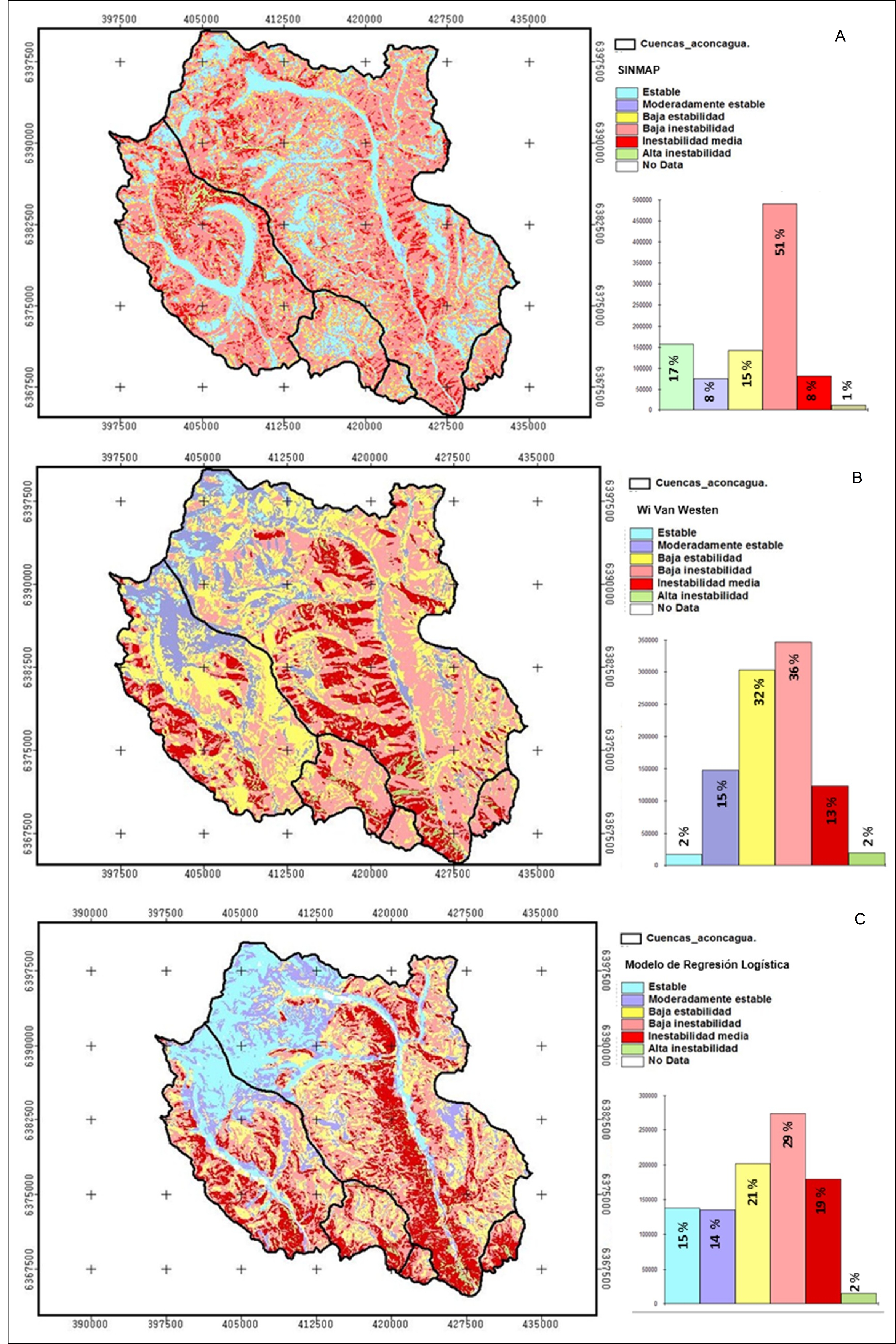Debris flows susceptibility analysis in the Provincial Aconcagua Park, Mendoza, Argentina
Keywords:
spatial hazard, conditioning factors, debris flowsAbstract
Debris flows occurrence represents a potential geological hazard threatening community of the Aconcagua Park. These events are generated on steeper slopes reaching high velocities and great volume. Main historical cause of events is water saturation of sediments or rocks due to precipitation, snow thawing or permafrost degradation during warmer seasons. This paper focuses in the analysis of debris flow susceptibility considering conditioning factors such as lithology, slope, elevation, slope orientation and vegetation presence. These variables were analyzed through superposition of thematic maps and an inventory map of historical debris flows in a GIS environment. A physical model (SINMAP) and statistical methods of logistic regression and Wi were applied obtaining three different models spatially validated with inventory control map. The models showed good performance, even though the SINMAP shows differences in the zoning comparing with statistician ones, being logistical regression the more proper method for susceptibility assessment.
Downloads

Downloads
Published
How to Cite
Issue
Section
License
Aquellos autores/as que tengan publicaciones con esta revista, aceptan las Políticas Editoriales.











.jpg)




